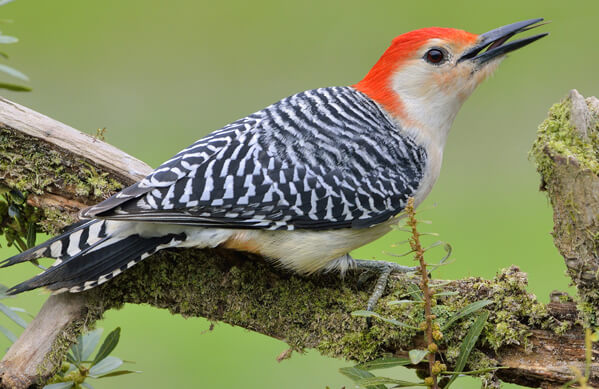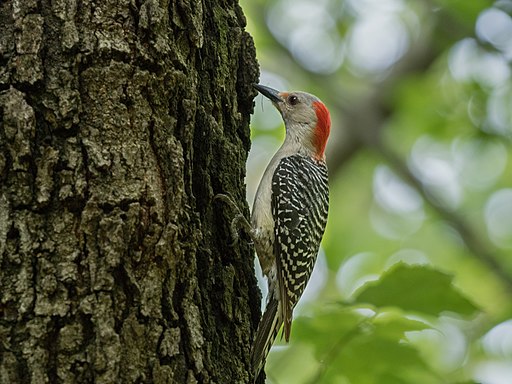Woodpeckers: A Comprehensive Overview to Comprehending These Distinct Birds
Woodpeckers, with their distinctive actions and physical qualities, have long astounded the inquisitiveness of ornithologists and nature lovers alike. As we discover the intricate anatomy, diverse species, and ecological importance of woodpeckers, a deeper appreciation for these unique birds and the mysteries they hold unfolds.

Woodpeckers' Drumming Habits
Woodpeckers exhibit a rhythmic and specific drumming behavior that offers various vital functions in their day-to-day lives. This actions is mostly related to communication, region defense, and foraging. The distinctive drumming noise is developed by the rapid pecking of their beaks against difficult surfaces such as tree trunks, branches, or perhaps metal items.
Interaction is an important aspect of woodpecker actions, and drumming plays a substantial function in this process. Woodpeckers utilize drumming to establish their visibility, bring in friends, and maintain contact with their companions and spawn. The frequency, strength, and period of drumming sequences communicate particular messages to other woodpeckers in the location.
Along with interaction, woodpeckers use drumming behavior for region defense. Woodpeckers in Florida. The loud and repetitive drumming acts as a cautioning to potential trespassers, signaling that the location is already claimed. By establishing their area through drumming, woodpeckers minimize the chance of problems over useful sources such as food and nesting websites
Furthermore, woodpeckers additionally utilize drumming as a foraging strategy. The rhythmic pecking assists them situate bugs hiding underneath the bark of trees by creating vibrations that interrupt the prey's concealment. This actions showcases the versatility and ingenuity of woodpeckers in utilizing their drumming skills for multiple essential functions.
Distinct Adjustments for Tree Climbing
Having understood the art of drumming to interact, safeguard territory, and forage, woodpeckers have developed special adaptations that facilitate their amazing climbing up capabilities in their arboreal habitats. One key adjustment is their specialized feet. Woodpeckers have zygodactyl feet, with 2 toes pointing forward and 2 toes aiming backward. This setup supplies a strong hold on the upright surface areas of trees, allowing them to stick effortlessly while foraging for bugs or drumming. Furthermore, woodpeckers have tight tail plumes that act as a prop to support their bodies as they climb up. These tail feathers give stability and balance, enabling woodpeckers to navigate up tree trunks with accuracy and agility.
Additionally, woodpeckers have powerful neck muscles and a special skull structure that aid in their climbing up capacities. Their solid neck muscular tissues permit them to quickly eat tree bark without experiencing whiplash, while their thick head and small mind official website work as shock absorbers, shielding them from the influence of duplicated drumming. These adjustments collectively make it possible for woodpeckers to navigate the upright world of trees with efficiency and poise.

Duty of Woodpeckers in Ecological Communities
By foraging for pests under the bark of trees, woodpeckers aid manage pest populations, protecting against break outs that can hurt the total health and wellness of the woodland. In addition, woodpeckers produce tooth cavities in trees that offer as vital nesting websites for a variety of various other bird species, advertising biodiversity within the ecosystem.
Additionally, the drumming and vocalizations of woodpeckers play a vital duty in interaction and area establishment. These sounds not just offer to bring in mates however additionally aid specify limits between different woodpecker areas, decreasing disputes and advertising an unified conjunction within the woodland neighborhood. In general, the visibility of woodpeckers in forest ecosystems highlights their significance as keystone types, influencing the dynamics and operating of these habitats in multifaceted ways.
Makeup: Specialized Beaks and Feet
In the detailed internet of woodland ecological communities, the specialized beaks and feet of woodpeckers are important adjustments that allow them to satisfy their crucial ecological duties. Woodpeckers have one-of-a-kind anatomical features that are particularly created to help them in their foraging and nesting habits.
One of the most distinct attribute of woodpeckers is their solid, chisel-shaped beaks. These beaks are perfectly adjusted for drilling right into timber to uncover bugs, larvae, and sap covert below the bark of trees. The strong muscles and sturdy structure of their beaks allow woodpeckers to eat a rate of up to 20 times per second without triggering damages to their skulls.
Additionally, woodpeckers have specialized feet that aid in their acrobatic climbing up capabilities. Their feet have two toes pointing onward and 2 toes directing backward, giving a solid hold on upright surface areas (Woodpeckers in Florida). This unique foot plan, in addition to rigid tail plumes that work as an encouraging prop, permits woodpeckers to cling to tree trunks and branches effortlessly while they look for food or excavate nesting cavities
Woodpecker Species Variety
Woodpeckers are a varied team of birds discovered across various ecosystems worldwide, with over 200 check my blog recognized types exhibiting adjustments to different atmospheres. Woodpeckers have evolved to inhabit a range of atmospheres, from forests and woodlands to meadows and deserts, each providing unique challenges that have influenced the evolution of unique woodpecker species.
These adjustments enable woodpeckers to forage efficiently in their try here respective habitats, lowering competition among varieties and promoting niche differentiation. In addition, geographical isolation and historical factors have actually played a duty in shaping the circulation and diversity of woodpecker varieties, leading to the wide selection of specialized adaptations seen in these fascinating birds.

Verdict
In conclusion, woodpeckers are interesting birds that show one-of-a-kind drumming actions, specialized adaptations for tree climbing, and play crucial functions in environments. With a varied variety of woodpecker species found worldwide, these birds are vital for preserving the wellness and balance of woodlands and timberlands.